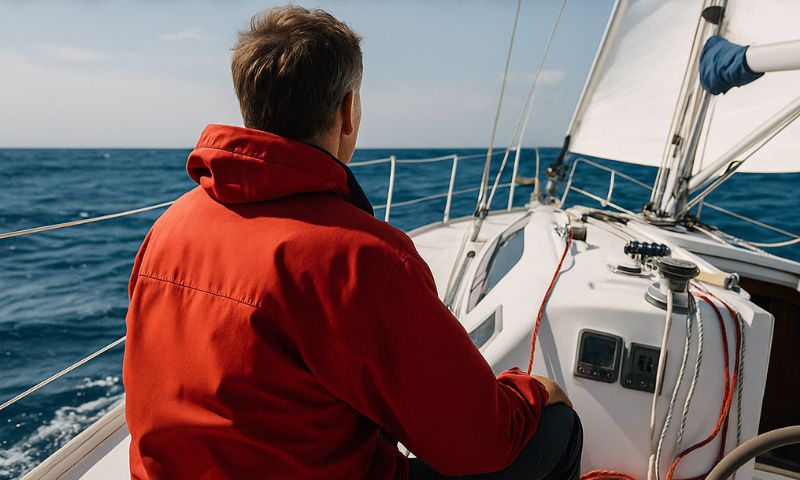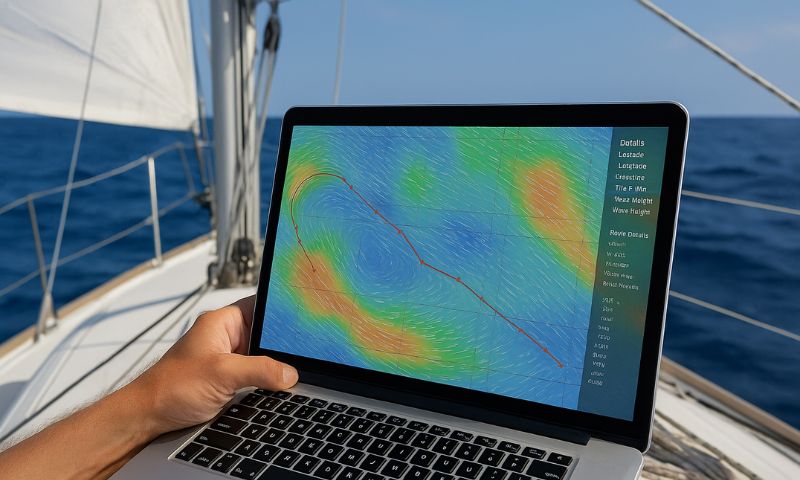Sailing solo is one of the purest and most rewarding forms of seamanship. Without a crew to rely on, every tack, every reef, every decision rests entirely on your shoulders. It’s where sailing becomes not just a technical endeavor, but a deeply personal one. Whether you’re preparing for a weekend cruise, a coastal passage, or a transoceanic voyage, solo sailing demands preparation, self-awareness, and smart gear choices.
In this guide, we’ll explore the mindset, techniques, and equipment that transform singlehanded sailing from intimidating to empowering—helping you stay safe, efficient, and confident when you’re the only one on board.
1. Why Sail Alone? The Freedom and the Challenge
Solo sailing appeals to those who find joy in independence and self-reliance. Without a crew, you move at your own rhythm. Decisions are immediate, instincts are sharpened, and the connection with the sea becomes more intimate. It’s meditative, liberating—and demanding.
But it’s not without its pressures. You’re solely responsible for navigation, sail trim, maintenance, and emergencies. This combination of freedom and challenge is what makes solo sailing unique. It’s not for everyone, but for those who embrace it, there’s nothing quite like the silence of the sea with only your boat and your thoughts.
2. Prepare the Boat: Simplicity Is Your Best Crew
Before you ever untie the lines, your boat must be rigged for one. That means reducing the need to leave the cockpit, minimizing sail handling effort, and eliminating unnecessary friction—both mechanical and mental.
Key upgrades include:
-
Autopilot or windvane steering: your silent first mate.
-
All lines led aft: so you can reef, tack, or drop sails without going forward.
-
Reliable self-tailing winches: to free up one hand.
-
Lazy jacks and roller furling systems: to simplify sail control.
Visibility and access are everything. Make sure your instruments are readable from the helm and that you can monitor sail shape from the cockpit. Tidy lines and minimal clutter will reduce fatigue and hazards during night watches or heavy weather.
----- 👀 A quick peek below deck…
While you’re reading about boat maintenance and common issues on board, why not take a moment to sneak a peek inside the Easysea community? It’s a free space built for sailors like you—where we talk about real problems, swap smart solutions, and share stories from life at sea. Inside, you’ll find:
⚓ Problems & Solutions – get answers from people who’ve been there.
🧰 Logbook and boat maintenance – see what others are doing to keep their boats in shape.
🌊 Easy Chat – hang out, ask questions, and stay in the loop. 👉 Curious? Hop on board and join us.
It’s free.
3. Know Yourself: Mental Preparation for Solo Sailing
Sailing solo is as much psychological as it is technical. Isolation, fatigue, and decision fatigue can wear on even experienced sailors. Solo sailors must be honest with themselves about their strengths and limits. It’s better to shorten a passage or take a rest than to push beyond your edge.
Practice mindfulness: breathe, check in with your mental state, and stay present. Develop routines that help maintain calm—logbook entries, small meals, moments of pause. Many solo sailors swear by audible reminders or checklists to avoid errors under stress or fatigue.
4. Time Management and Sleep Strategies
Sleep is the hardest currency in solo sailing. Without crew rotations, you have to find ways to rest without leaving the boat vulnerable. The key is strategic napping and system alerts.
For coastal trips, rely on short naps of 15–30 minutes, paired with radar alarms, AIS proximity alerts, and GPS tracking. Offshore, where traffic is minimal, naps can stretch longer but still require disciplined alarms.
Plan maneuvers and meals around calmer windows. Don’t wait until you’re exhausted to rest—solo sailing is a marathon, not a sprint.
5. Safety First: What You Need When You’re Alone
When sailing solo, there’s no one to call your name if you fall overboard. Safety equipment is non-negotiable. Wear a lifejacket at all times and clip in with a tether whenever moving on deck. Use jacklines properly tensioned and check them for wear.
Other essentials:
-
EPIRB or PLB, easily accessible.
-
VHF with DSC, ideally with remote mic near the helm.
-
AIS transceiver, to be seen and to see others.
-
Manual and electric bilge pumps, checked regularly.
Emergency self-rescue is the last line of defense—make sure you’ve rehearsed worst-case scenarios, from rudder loss to fire, before you ever sail alone.
6. Navigation and Weather Planning
Without a second opinion, your passage planning must be bulletproof. Study weather windows thoroughly and have contingencies in case conditions change.
Use apps or onboard software that combine weather routing with safety margins, like PredictWind or Savvy Navvy. Paper charts and backup GPS are a must in case of electronics failure.
Avoid overly ambitious legs—distance is more draining alone, and anchoring or docking solo can be trickier than expected. Always have a “plan B” anchorage or safe harbor.
7. Docking and Anchoring Alone
These are the moments solo sailors often dread most: getting in and out of marinas, catching mooring buoys, or setting anchor with no one at the bow. The trick is preparation.
Use:
-
Pre-set spring lines or bow loops.
-
Boat hooks with clip-on lines.
-
Wireless remote windlass controls, if available.
-
Clear hand signals or routines—even if it’s just for you.
Practice makes perfect. Start in calm harbors, and work your way up to more exposed landings. Confidence grows with repetition.
8. Final Thoughts: Sailing Alone, but Never Lonely
Solo sailing may look solitary, but it rarely feels lonely. Each wave, each sail trim, each shift in wind becomes your dialogue with the sea. You’re never just the skipper—you become the cook, mechanic, navigator, weather analyst, and philosopher. You meet yourself fully.
By embracing the demands of solo sailing, you unlock a deeper understanding of seamanship and self. And once you’ve experienced the sunrise from a quiet cockpit, with no one to answer to but the horizon, you’ll understand why so many sailors keep coming back to this quiet, powerful form of freedom.





Leave a comment
This site is protected by hCaptcha and the hCaptcha Privacy Policy and Terms of Service apply.